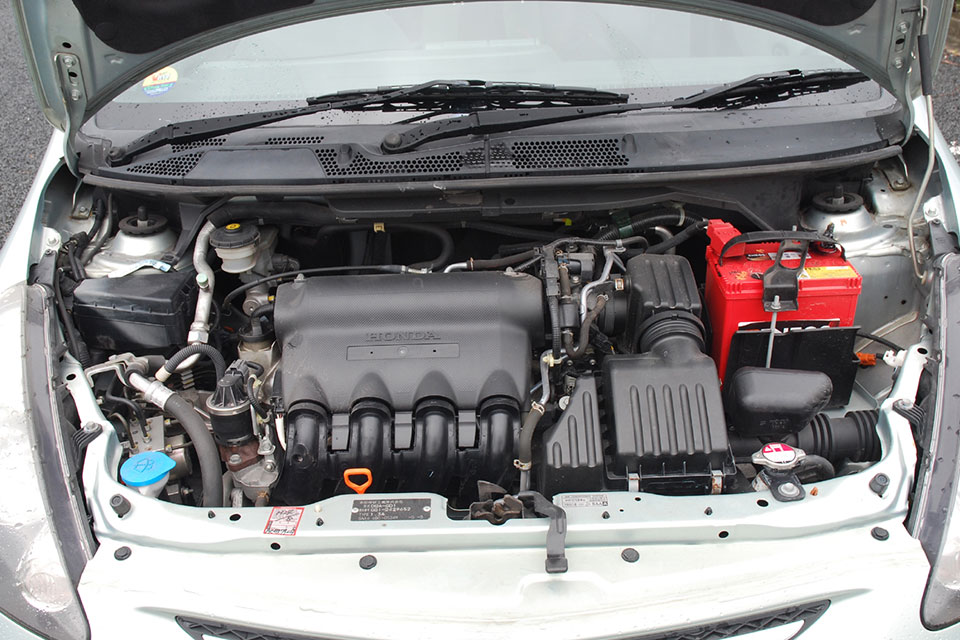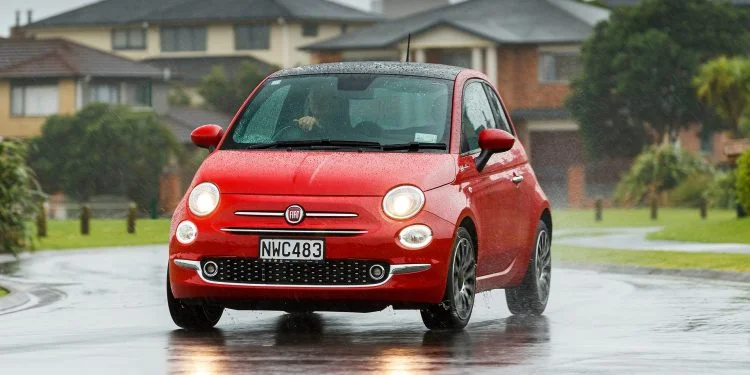Honda Fit 2001-2008 used car review
The Honda Fit is a practical city runabout. It is cleverly designed and makes the most of the space.

The Honda Fit is a practical city runabout. It is small, but this is balanced by an interior which is cleverly designed and makes the most of the space.
When the Honda Fit launched in 2001, it promised to be fuel-frugal and deliver more interior versatility than its competitors. Its party trick is a rear seat base that folds up to create a usable open space for carrying large loads. Sold in New Zealand as the Jazz, it was named the 2001 Japan Car of the Year.
Inside and out
A short nose, big windows and tall narrow shape make our 2007 used-import Fit look like a mini people mover. This design delivers maximum interior room for a small amount of space taken up on the road, so it's perfect for city use. Drivers also enjoy excellent all-round visibility when nipping down narrow streets and squeezing into tight parking spots.
Inside, the Fit’s large, easy-to-read instruments are housed in three round pods. The manual air conditioning controls that sit below the touchscreen infotainment system are chunky and easy to grab. The radio will require a band expander to pick up most local radio stations.
Storage is plentiful for the driver and front passenger. There is a huge glovebox, and a long shelf runs under the dashboard to carry any extra items you may need close at hand. Another storage bin sits within the centre console ahead of the cup holders and transmission shifter.
The front seats are high and tall, and the cushioning quite firm. The height and upright position will appeal to drivers and passengers with mobility issues. There is no long drop down into the seat, or lift up from it when getting in and out. The rear seat’s slightly restricted width makes it better suited to just two adults or three children. Legroom and headroom, however, is plentiful for a small car.
Honda has maximised cabin space by moving the fuel tank from the traditional spot under the rear seats to beneath the front seats.
The base of the rear seat – called a 'magic seat' by Honda – can be folded out of the way to create a tall luggage space big enough to take two large suitcases or even children’s bikes. For larger loads, the rear seat can fold down 60/40 to create a healthy amount of cargo space, and for very long items, the front passenger seat will also fold down. The boot alone is big for the class at 370 litres, and its depth allows three medium suitcases to stand upright.
On the road
Our review car is powered by Honda’s 1.3-litre four-cylinder ‘i-DSI’ engine, which uses two spark plugs for better fuel efficiency. The engine produces 63kW and 119Nm, which is normal for the class, but it does not feel as quick or responsive as competitors like the Mazda Demio. A 1.5-litre engine with Honda’s VTEC variable valve timing system is also available.
Part of the Fit’s lack of eagerness is caused by the CVT automatic. This transmission format is chosen for its fuel efficiency, but it can make the engine sound as if it’s revving hard even when the car is travelling quite slowly. That can be tiresome on a long trip with a heavy load on board. Five-speed manuals exist but are extremely rare.
Ride comfort is excellent, with bumpy city roads no problem for the car. There is some body roll, the steering does not give much in the way of feel or feedback.
Visibility, both to the front and rear, is also excellent – it is easy to see over the short bonnet, and the Fit’s small size makes parking very easy. Our review car has no parking sensors or reversing camera, and we don’t think they are required.
Safety
RightCar lists the Honda Fit (2002–2008), as having a low two-star Used Car Safety Rating, based on real-world crash data from New Zealand and Australia. It should be noted, however, that the closest competitors, the Suzuki Swift (2005–2010), and Mazda Demio (2002–2007), have only one-star ratings.
The New Zealand–new Jazz (2003–2007) carries a four-star ANCAP rating thanks to the addition of side and curtain airbags, electronic stability control and electronic brakeforce distribution.
The Fit is not well equipped for carrying infants, with ISOFIX mounts not standard until the next-generation model. The centre seatbelt is a lap-only type, offering less protection than a full three-point belt, and is unsuitable for a booster seat.
Reliability
When buying, look out for a shudder from the engine and transmission when taking off. It suggests a common issue caused by wear to the starter clutch. In the past, this meant a new transmission was required, but now most workshops can flush the transmission and treat it with a commercially-available additive — an effective fix for around $300.
A total transmission unit failure is possible on very high mileage or badly serviced cars, either through a snapped belt or collapsed mechanism. It is not economical to repair the transmission, as used units can be sourced and fitted for around $1,300.
Cost of ownership
Honda Fits require servicing every 10,000km or 12 months, with new transmission fluid needed every 40,000km. The standard service costs $340 at a Honda dealer, while the transmission service is an additional $150.
RightCar estimates that over 14,000km of driving a 1.3-litre Honda Fit will cost $1,480 a year to fuel, the same as a Suzuki Swift and $110 less than a Mazda Demio. The 42-litre fuel tank will cost $84 to fill at $2 a litre and should take you 700km before the fuel light comes on.
The Fit is in the second cheapest class for ACC levies, so the annual licensing fee (registration) is $127.37.
Trade Me Insurance estimates insurance for the car will cost $42.50 per month for a car valued at $5,300*, around $5 less than a Mazda Demio.
Buyers’ guide
Prices for the Fit on Trade Me start at $3,000, reaching $8,000 for newer cars with lower mileage. Currently, it is common to see freshly-imported 2002–2005 cars that have travelled around 100,000km offered for sale below $4,000. These offer great value.
While they look great, red Fits should be avoided. The paint is prone to fading, turning pink on the roof, bonnet and plastic bumpers. The clear coat on this colour can also bubble and peel away. Sellers have been known to polish the car to hide the fading, but it will soon return.
Variants
- A - Standard specification, with manual air conditioning, electric windows and steel wheels
- Y - Adds extra features including climate control air conditioning, keyless entry and wing mirror indicators
- S - Adds alloy wheels, a body kit, spoiler and dark-coloured interior
All three specifications are also available with the 1.5-litre engine, and all-wheel drive is optional — these Fits are the ‘W’ model. Some Fits will be advertised as a ‘Sport’, this is the 'S' model. A sedan version is also available, called the Aria.
Timeline
- 2001 Launched in Japan
- 2006 Minor cosmetic facelift
- 2009 Replaced by new generation
Details
2007 Honda Fit A
$4,000 to $9,000 for models which have travelled 70,000 to 120,000km
1.3-litre four-cylinder, 63kW/119Nm (claimed)
CVT automatic, front-wheel drive
Two-star Used Car Safety Rating
10,000km or 12 months
Space saver
5.3-litres per 100km (claimed)
Regular
3845mm
1675mm
1525mm
450kg (unbraked), 800kg (braked)
9,4m
This review covers the Honda Fit for model years 2001, 2002, 2003, 2004, 2005, 2006, 2007 and 2008.
Review vehicle supplied by 2CheapCars, Botany.
*Our insurance estimates are based on a 35-year-old male with no accidents in the last two years, garaging the car in Mission Bay, Auckland. The car is not used for business and will cover 10,000km to 20,000km a year. We estimate with no option add-ons and $500 excess. Customise your estimate at Trade Me Insurance.
Image gallery
Also consider






